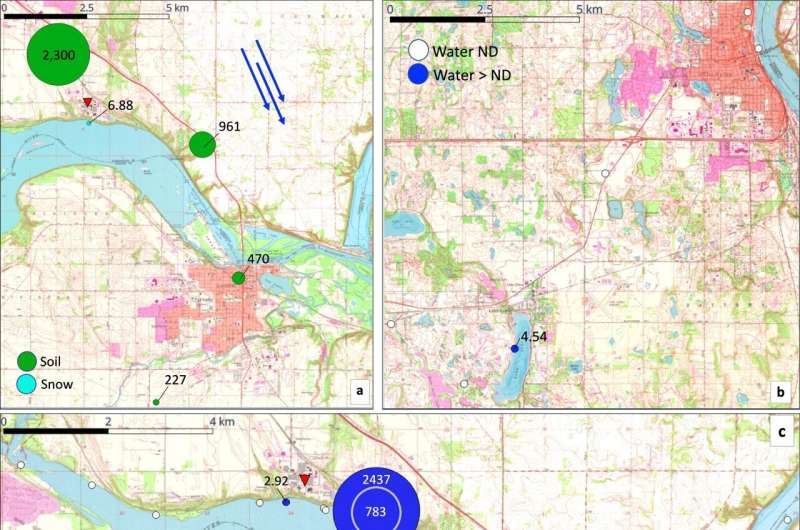This article has been reviewed according to Science X's editorial process and policies. Editors have highlighted the following attributes while ensuring the content's credibility:
fact-checked
peer-reviewed publication
trusted source
proofread
Lithium ion batteries a growing source of PFAS pollution, study finds

Texas Tech University's Jennifer Guelfo was part of a research team that found the use of a novel sub-class of per- and polyfluoroalkyl (PFAS) in lithium ion batteries is a growing source of pollution in air and water.
The findings were published in a study in Nature Communications today.
Testing by the research team further found these PFAS, called bis-perfluoroalkyl sulfonimides (bis-FASIs), demonstrate environmental persistence and ecotoxicity comparable to older notorious compounds like perfluorooctanoic acid (PFOA).
Lithium ion batteries are a key part of the growing clean energy infrastructure, with uses in electric cars and electronics, and demand is anticipated to grow exponentially over the next decade.
"Our results reveal a dilemma associated with manufacturing, disposal, and recycling of clean energy infrastructure," said Guelfo, an associate professor of environmental engineering in the Edward E. Whitacre Jr. College of Engineering.
"Slashing carbon dioxide emissions with innovations like electric cars is critical, but it shouldn't come with the side effect of increasing PFAS pollution. We need to facilitate technologies, manufacturing controls and recycling solutions that can fight the climate crisis without releasing highly recalcitrant pollutants."
The researchers sampled air, water, snow, soil and sediment near manufacturing plants in Minnesota, Kentucky, Belgium and France. The bis-FASI concentrations in these samples were commonly at very high levels.
Data also suggested air emissions of bis-FASIs may facilitate long-range transport, meaning areas far from manufacturing sites may be affected as well. Analysis of several municipal landfills in the southeastern U.S. indicated these compounds can also enter the environment through disposal of products, including lithium ion batteries.
Toxicity testing demonstrated concentrations of bis-FASIs similar to those found at the sampling sites can change behavior and fundamental energy metabolic processes of aquatic organisms. Bis-FASI toxicity has not yet been studied in humans, though other, more well-studied PFAS are linked to cancer, infertility and other serious health harms.
Treatability testing showed bis-FASIs did not break down during oxidation, which has also been observed for other PFAS. However, data showed concentrations of bis-FASIs in water could be reduced using granular activated carbon and ion exchange, methods already used to remove PFAS from drinking water.
"These results illustrate that treatment approaches designed for PFOA and PFOS (perfluorooctanesulfonic acid) can also remove bis-FASIs," said study author Lee Ferguson, associate professor of environmental engineering at Duke University. "Use of these approaches is likely to increase as treatment facilities are upgraded to comply with newly enacted EPA Maximum Contaminant Levels for PFAS."
Guelfo and Ferguson emphasize this is a pivotal time for adoption of clean energy technologies that can reduce carbon dioxide emissions.
"We should harness the expertise of multi-disciplinary teams of scientists, engineers, sociologists, and policy makers to develop and promote use of clean energy infrastructure while minimizing the environmental footprint," Ferguson said.
"We should use the momentum behind current energy initiatives to ensure that new energy technologies are truly clean," Guelfo added.
More information: Jennifer L. Guelfo et al, Lithium-ion battery components are at the nexus of sustainable energy and environmental release of per- and polyfluoroalkyl substances, Nature Communications (2024). DOI: 10.1038/s41467-024-49753-5
Journal information: Nature Communications
Provided by Texas Tech University




















